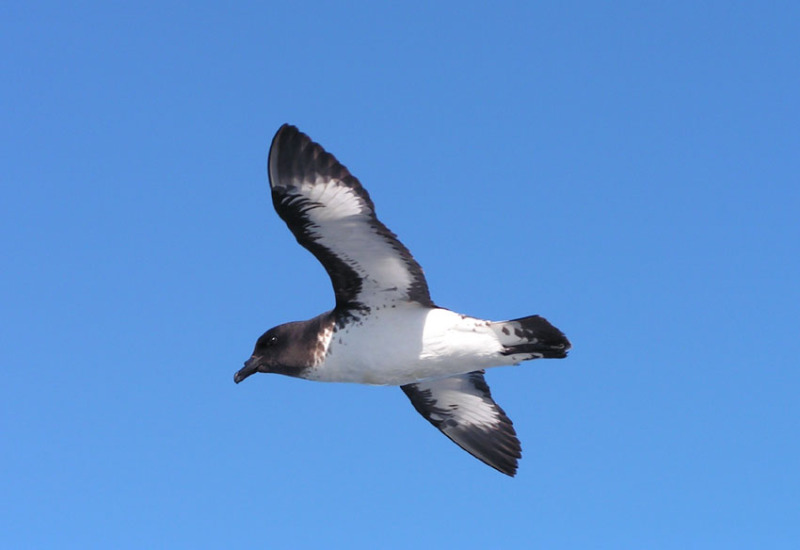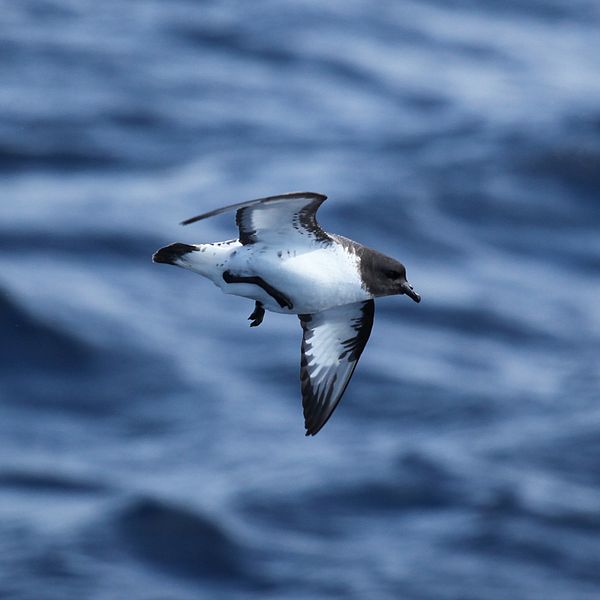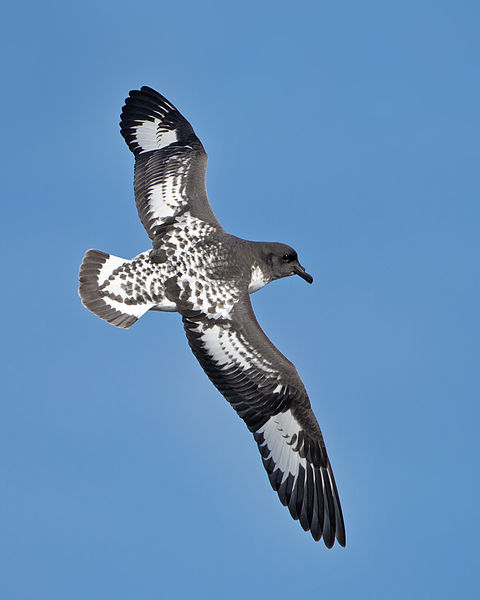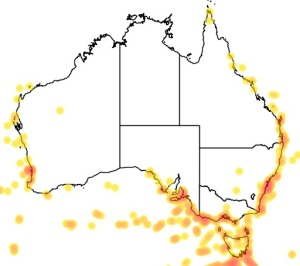Colours
Distinguishing features
The Cape Petrel is a unique looking Petrel. It has a black head and neck, and a white belly, breast, and its underwing is white with a black border. Its back, and upperwings are black and white speckled, as is its tail which also has a band of black. (Wikipedia)
Size
- From 35 cm to 45 cm (Length of specimen) - applies to Adults
Wingspan
- Up to 86 cm
Synonyms
Distribution
Distribution and habitat preferences
It is common in the Southern Ocean.
During breeding season, Cape Petrels feed around Antarctica's shelf and during the winter they range further north, as far as Angola and the Galapagos Islands. They breed on many islands of Antarctica and the subantarctic islands, some going as far as the Auckland Islands, the Chatham Islands, Campbell Island. Their main breeding grounds were on the Antarctic Peninsula, South Georgia, the Balleny Islands, the Kerguelen Islands, as well as islands in the Scotia Sea. (Wikipedia)
Diet
Cape Petrels' diet was 80% crustaceans, as well as fish and squid. Krill was their favorite crustacean, which they would obtain by surface seizing as well as diving under water and filtering them out. They are also known for following ships and eating edible waste thrown overboard and carcasses. They are aggressive while feeding and will spit their stomach oil at competitors, even their own species. (Wikipedia)




